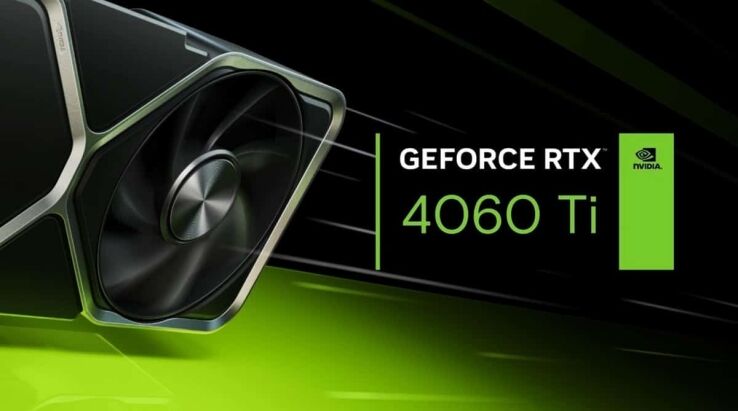Is the RTX 4060 Ti worth it?
We look at both the RTX 4060 Ti 8GB and RTX 4060 Ti 16GB versions to determine if either are right for you

WePC is reader-supported. When you buy through links on our site, we may earn an affiliate commission. Prices subject to change. Learn more
So is the RTX 4060 Ti worth it? With the embargo on reviews lifting, we can see what the graphics card has to offer. First impressions look like it offers decent 1080p performance with some 1440p wiggle room. That is all she wrote for the 8GB model, which many feel doesn’t offer enough for an upgrade on previous gen models. What does that mean for you and deciding on whether to get it?
Based on this data, we’ve deduced when you should buy one of the new RTX 4060 Ti graphics cards and suggested some alternatives if you decide against Nvidia’s new mid-range GPU.
TLDR: if you’ve got a similar SKU card older than an Nvidia 30-series in your current machine, or don’t have a graphics card whatsoever, then it’s a good buy if you’re interested in using DLSS. If you don’t like artificial frame generation / don’t play games where it’s a feature, then a previous-gen card may be a better value. Then you can consider where to buy RTX 4060 Ti.
ASUS RTX 4060 Ti 8GB TUF Gaming OC
Core Clock Speed
2,310MHz base, 2,655MHz OC boost
CUDA cores
4,352
Memory Size
8GB GDDR6
Dimensions
300 x 139 x 62.4mm – 3.12 slot
PSU Required
650W
TBP
160W
RTX 4060 Ti vs previous gen
Comparing the RTX 4060 Ti 8GB vs RTX 3060 Ti, we see the performance does not increase that much at all. With only a 9FPS increase on average at 1080p, 4 at 1440p, and 1 at 4k it’s not really that much more significant. And with the same price point, you’re more likely to find a cheaper older card that is more worth it for the similar performance.
Especially with the limited bandwidth of the 4060 Ti as the bus has been cut down even from the 3060 Ti. This does mean it’s less likely a strong contender later down the line.
8GB vs 16GB VRAM
First of all – the two RTX 4060 Ti versions – which should you pick?
Well the RTX 4060 Ti 8GB variant has an MSRP of $399 but is identical in every way to the RTX 4060 Ti 16GB (MSRP $499), other than the amount of VRAM (the memory bandwidth, speed, and interface remain the same).
Until recently we’d have suggested that the higher VRAM would generally only be needed for playing games at 4K resolution or using graphical workstation software where it can make an impact (we’d advise doing some research into what software you might be interested in using if you’re a creative looking for an upgrade). However, the frame-generating power of the RTX 4060 Ti is insufficient for 4K gaming, so this is out.
Recently though games like Hogwarts Legacy and The Last Of Us have proven very demanding on VRAM at 1440p – requiring 10-11GB to run properly, so this is where the higher VRAM might make sense, though you will have to pay an additional $100 for the privilege, without the extra bandwidth either.
RTX 4060 Ti alternatives
The following cards are (roughly speaking) fairly equal in their frame generating performance at 1080p resolution, and the RTX 4060 Ti outperforms them all by about 15% on average in this scenario, however some of them are available for substantially cheaper, so may be more enticing alternatives. We’ve listed the main differences below, plus their current approximate mid-SKU AIB price:
- RTX 4060 (c.$299) – 8GB VRAM, has all the same benefits of DLSS 3.0 frame generation as the RTX 4060 Ti.
- RTX 3060 Ti (c.$399) – 8GB VRAM, limited to DLSS 2.0.
- RTX 3070 (c.$499) – 8GB VRAM, limited to DLSS 2.0, superior Ray-Tracing to the RTX 3060 Ti.
- AMD Radeon RX 6750XT (c.$399) – 12GB VRAM, only FSR (no DLSS), inferior Ray-Tracing.
For those who aren’t looking for more VRAM (playing games that don’t need it at 1080p), we think the RTX 4060 offers a better value proposition than the RTX 4060 Ti 8GB (being 25% cheaper for only 15% less performance).
If you aren’t interested in artificial frame generation performance (there are some out there who aren’t fans or don’t play the games where it’s compatible), then you may want to consider the 12GB AMD Radeon RX 6750XT as a cheaper alternative to the $499 16GB RTX 4060 Ti if you need more VRAM than the 8GB model offers (e.g. playing Hogwarts Legacy or The Last Of Us at 1440p as mentioned). As an AMD card, it has inferior ray-tracing, but at this level of power you might not be interested in that feature anyway.
Is the RTX 4060 Ti worth it?
The RTX 4060 Ti 8GB model does not seem worth it. Reviews have slated it for its limited memory capacity and bandwidth. And without much improvement over the previous gen, it doesn’t really add much value apart from frame generation to boost its own performance. But the limited VRAM will hinder the look of textures and performance down the line for some games as they improve the look of things.
The RTX 4060 Ti (16GB variant) is worth it for creatives and gamers looking to play at 1440p, though in the case of the latter, we’d opt for the AMD Radeon RX 6750XT if you won’t be using DLSS or Ray-Tracing. But it might be worth waiting for benchmarks to see if, like its 8GB counterpart, it just doesn’t make sense.
ZOTAC GeForce RTX 4060 Ti 8GB Twin Edge
Core Clock Speed
2310MHz base, 2,535MHz boost
CUDA cores
4,352
Memory Size
8GB GDDR6
Dimensions
225.5 x 123.2 x 40.1mm (2.2 slot)
PSU Required
500W
TBP
160W